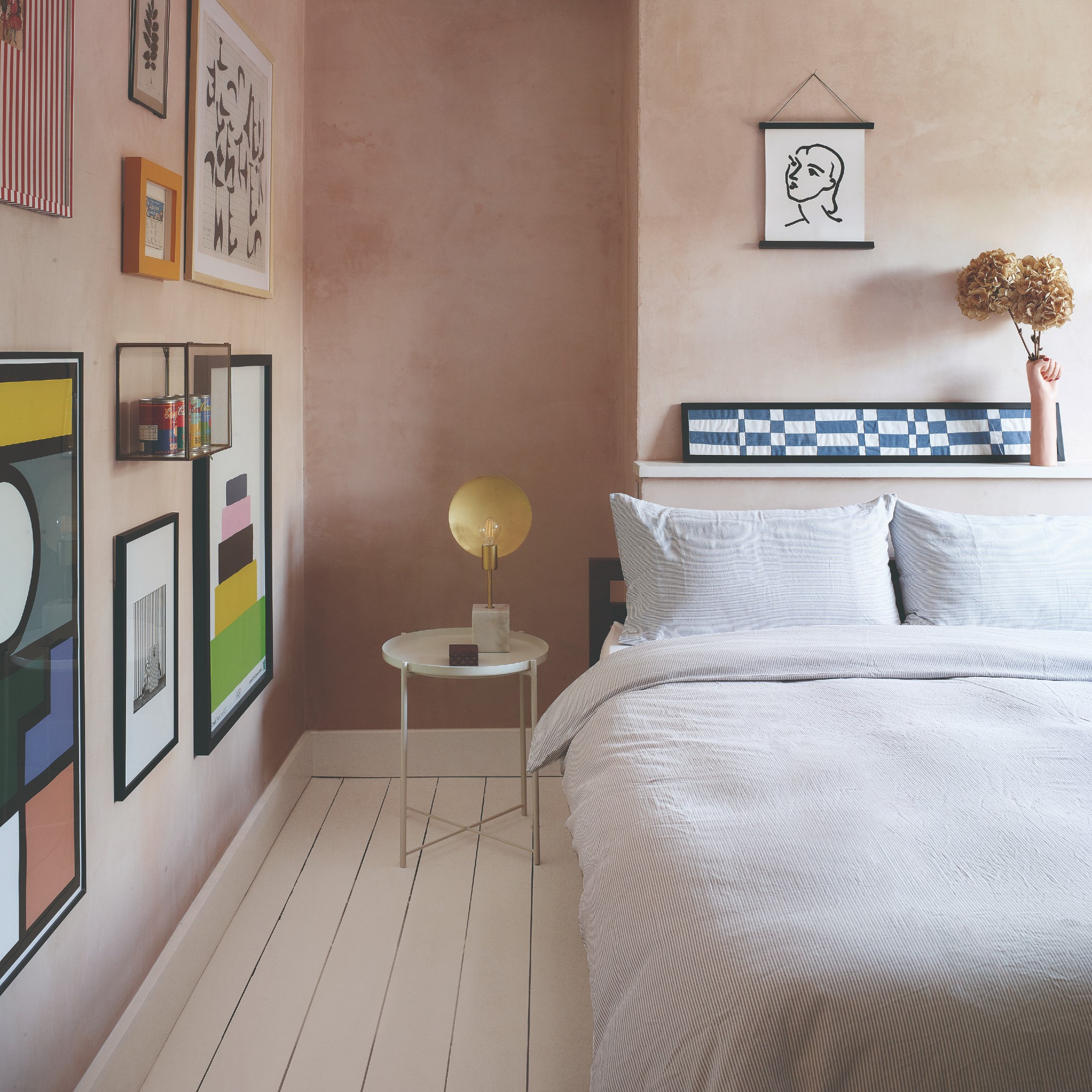
Your home should act as a refuge where you can escape to, away from the hustle and bustle of everyday life in the outside world that goes on beyond your front door. Nowhere is this more true and more important than in the bedroom - a place of relaxation and recharge. But you can’t relax and recharge in the middle of a mess, which is why making time for decluttering your bedroom on a regular basis is a must.
But such a task can be a daunting one. Especially if you’re not one to enjoy cleaning and getting rid of things, even though for some it can be an almost meditative activity. Since hiring a professional organiser to make the chore easier is not within everyone’s budget, we’ve asked a few pro organisers to give us their top tips – from bedroom storage ideas to the best methods and even where to start when decluttering a bedroom.
14 tips for decluttering a bedroom
There are several negative effects that a cluttered and messy bedroom can have on our state of mind and even sleep quality.
‘An untidy bedroom can increase stress levels and affect concentration and quality of sleep,’ says Jane Lee, founder of Jane Lee Interiors and APDO (Association of Professional Declutterers and Organisers) member.
Katie Austin, founder of The Organised Tribe and APDO member, chimes in with what a bedroom should be, ‘The goal for a bedroom is to be as minimal as possible, think luxury hotel, promoting a good night's sleep.’
So it’s best to keep this in mind as you’re decluttering your bedroom and thinking about the best wardrobe storage ideas and the like.
1. Remove what doesn’t belong

Before you get into the proper nitty gritty part of decluttering the bedroom, it’s likely that you will have items lying around that don’t belong – whether that’s toys from the kids’ room or perhaps a glass or a mug from the kitchen. So start by removing those.
‘Obvious quick wins would be to remove everything that doesn’t belong in the bedroom,’ says Victoria Fearnley, founder of Surrey Decluttering and APDO member. ‘What does and doesn’t belong might differ from bedroom to bedroom and how the space is used. For example, if your bedroom doubles up as an office during the day, you will be forgiven for having paperwork in your bedroom! At a minimum, any children’s toys should go back to their bedrooms.’
‘Think about removing any surplus items you have lying around. Think lotions and potions such as hand creams or nighttime reading such as books or magazines. You don’t need to have five books on your bedside table,’ she concludes.
2. Work in sections
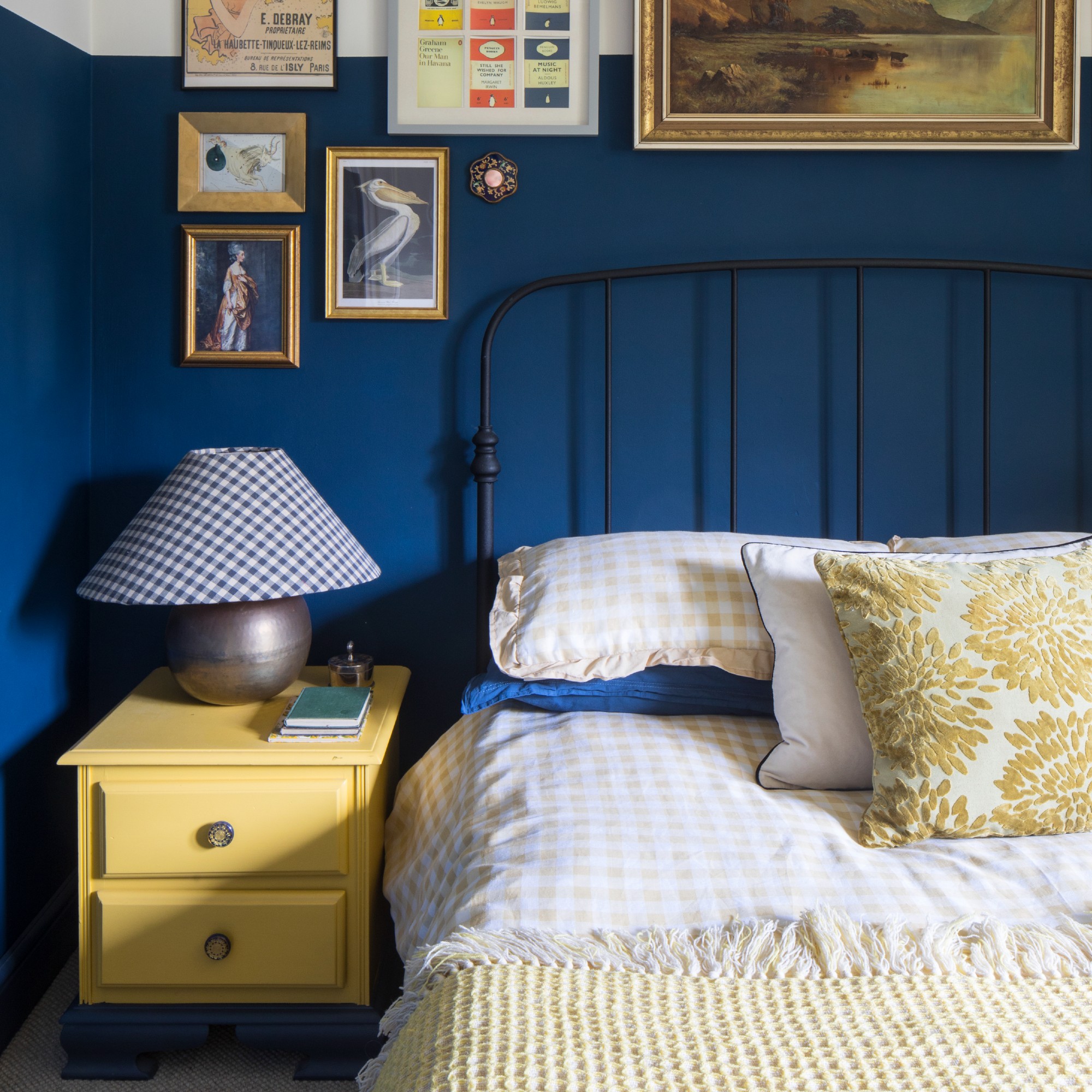
‘When tackling any declutter job it’s good to know what your end goal is and then look at the way you might tackle it in a realistic way,’ says Siân Pelleschi, founder of Sorted! and APDO president. ‘The key element to stop any overwhelm taking hold is to break the job down into manageable chunks.’
The key is to create a decluttering checklist that breaks the room down into sections or areas which you’ll tackle one by one. So the job is full of little wins as you go along.
‘If you know that you easily get overwhelmed, distracted or bored whilst having a clear out, try setting yourself small & achievable goals. This can be doing a drawer at a time or a category of clothing each session. Adding a timeframe will also help to get the job done,’ Victoria suggests.
Becky Purchas, founder of White Space and APDO member, agrees, ‘It's a good idea to set a timer for 20 to 30 minutes and take regular breaks.’
3. Start with a small area
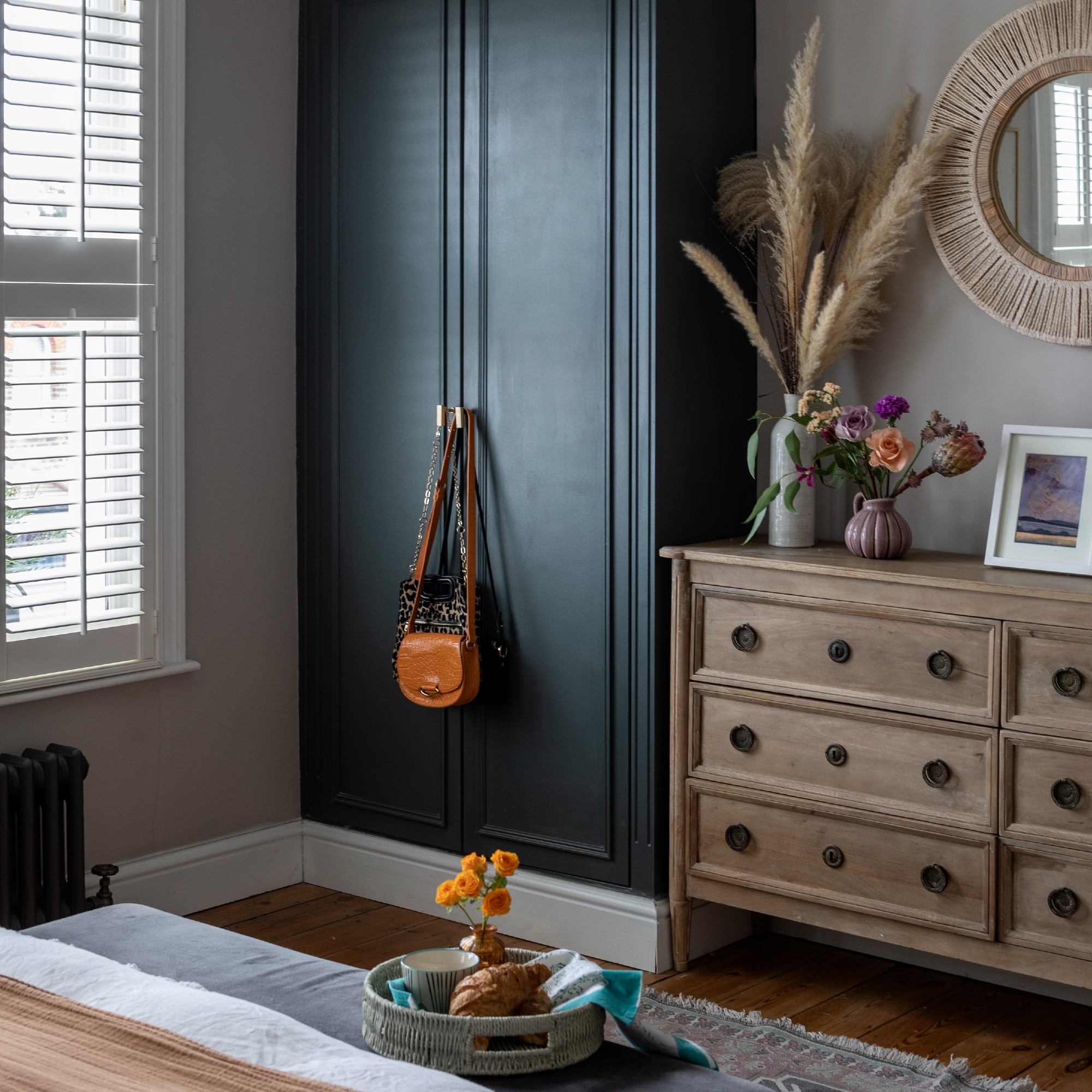
One of the biggest decluttering tips from the experts when doing a bedroom overhaul is to start small, rather than doing the biggest job (like the whole wardrobe) first so that you don’t get discouraged.
‘When decluttering, it is important to break it down into small manageable steps. Perhaps start with one surface, one drawer, one category. This way you will have a series of small successes that will keep you motivated to do more. Also if you have to stop before the room is finished, you will know that you have made some progress and where to start next time,’ Becky says.
4. Clear away surface clutter
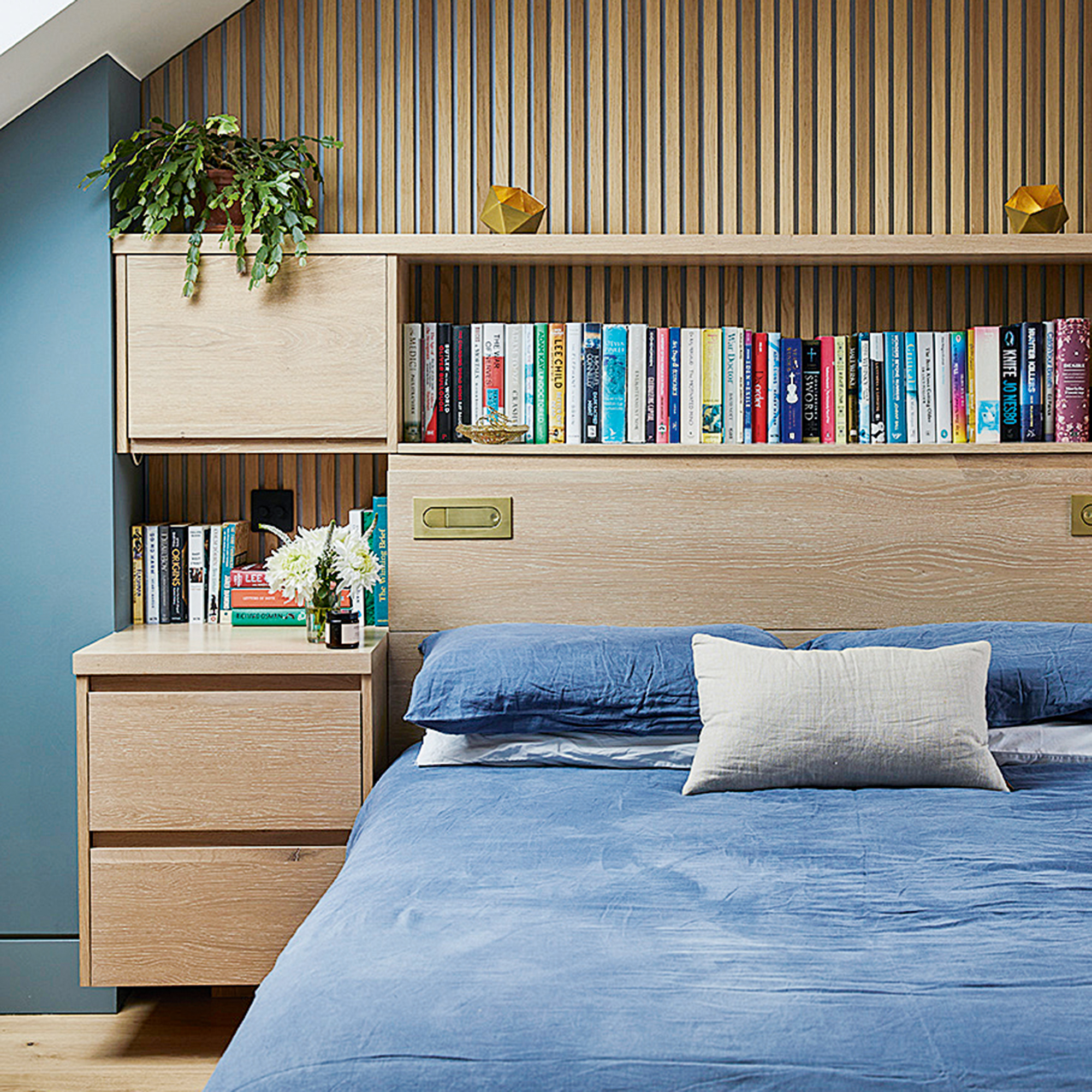
The most obvious clutter is the stuff you see every time you enter the bedroom, we’re talking all the detritus that breeds on bedside tables, shelving and the tops of drawers. Tackling this visible clutter first is a great way to get quick results and boost your enthusiasm for what can be a daunting task.
It’s essential to avoid just swooping everything into a cupboard and shutting the door. If an essential item has a proper home, it should be returned there. But anything that isn’t essential to your life or enhancing the design of your bedroom ideas, should be recycled or donated.
Try to be brutal with yourself, especially when facing clutter hotspots like your dressing table, which may be overflowing with make-up and toiletries that are past their best or never used.
‘If you find it tough to part with things, create a ‘maybe’ pile, put it in another room or the loft/garage, and set a reminder for six months time on your phone. If you haven't thought about it during that period then you know the answer,’ recommends professional organiser Charlotte Sitton, aka Organised by Charlotte. Small changes, like switching your bedroom lighting ideas from bedside lamps to wall lights, can clear off surfaces and make your bedside space tidier.
5. Separate items into categories
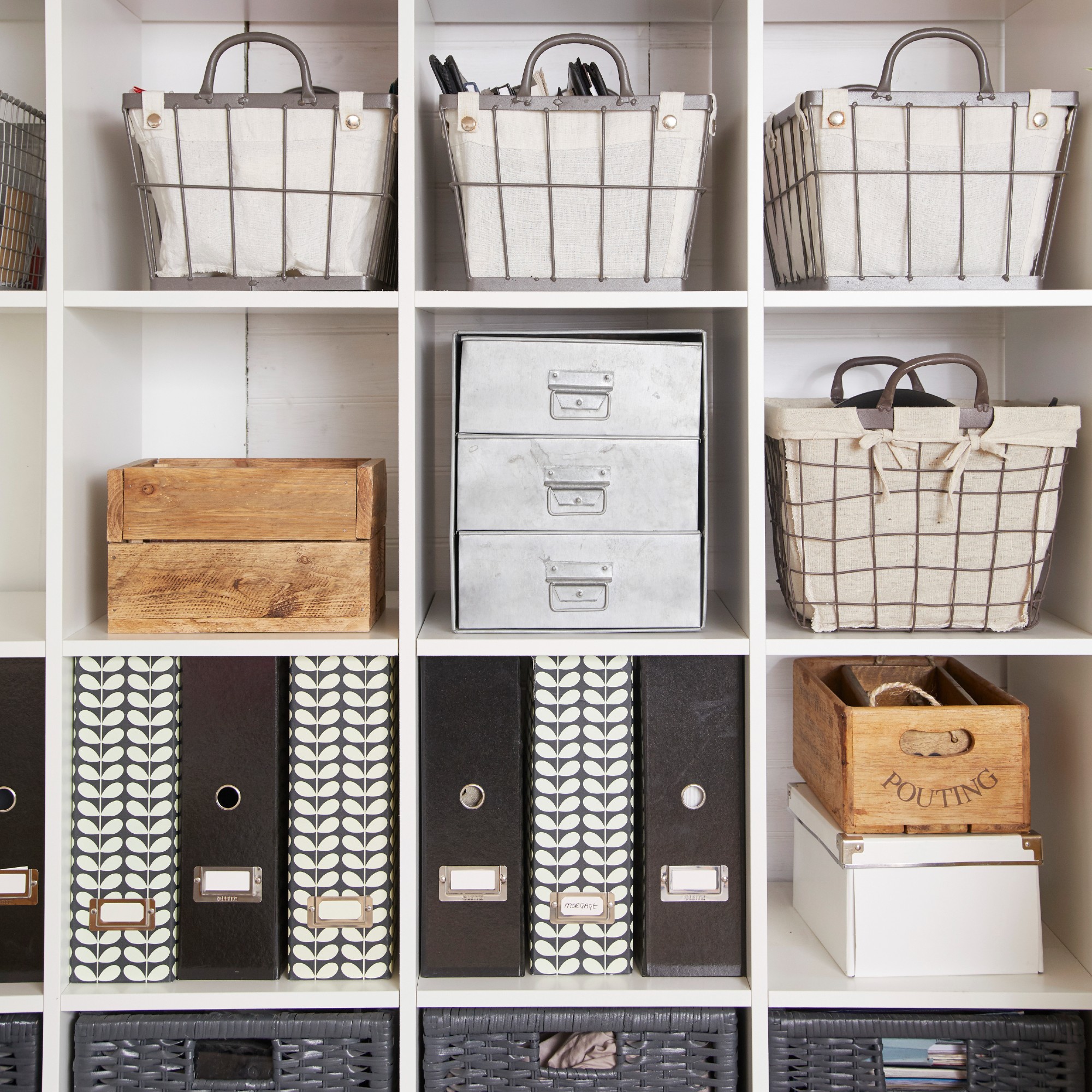
If you’re working with a very cluttered space it might be a good idea to put all the items you’re sorting into a box and take them into another room in the house and go through them there, separating them into categories or piles. Otherwise, this can be done on the bed or the bedroom floor.
‘To prevent ending up with a mountain of belongings that makes getting into bed a struggle, should you run out of steam halfway, I recommend moving everything into a spare bedroom or landing for sorting. Separate everything into categories first and gradually put back only the things you love or use fairly regularly, with sentimental items left until last. What’s left can be disposed of, sold, recycled or donated to charity,’ Jane says, recommending sustainable decluttering.
6. Sort out your closet shelves
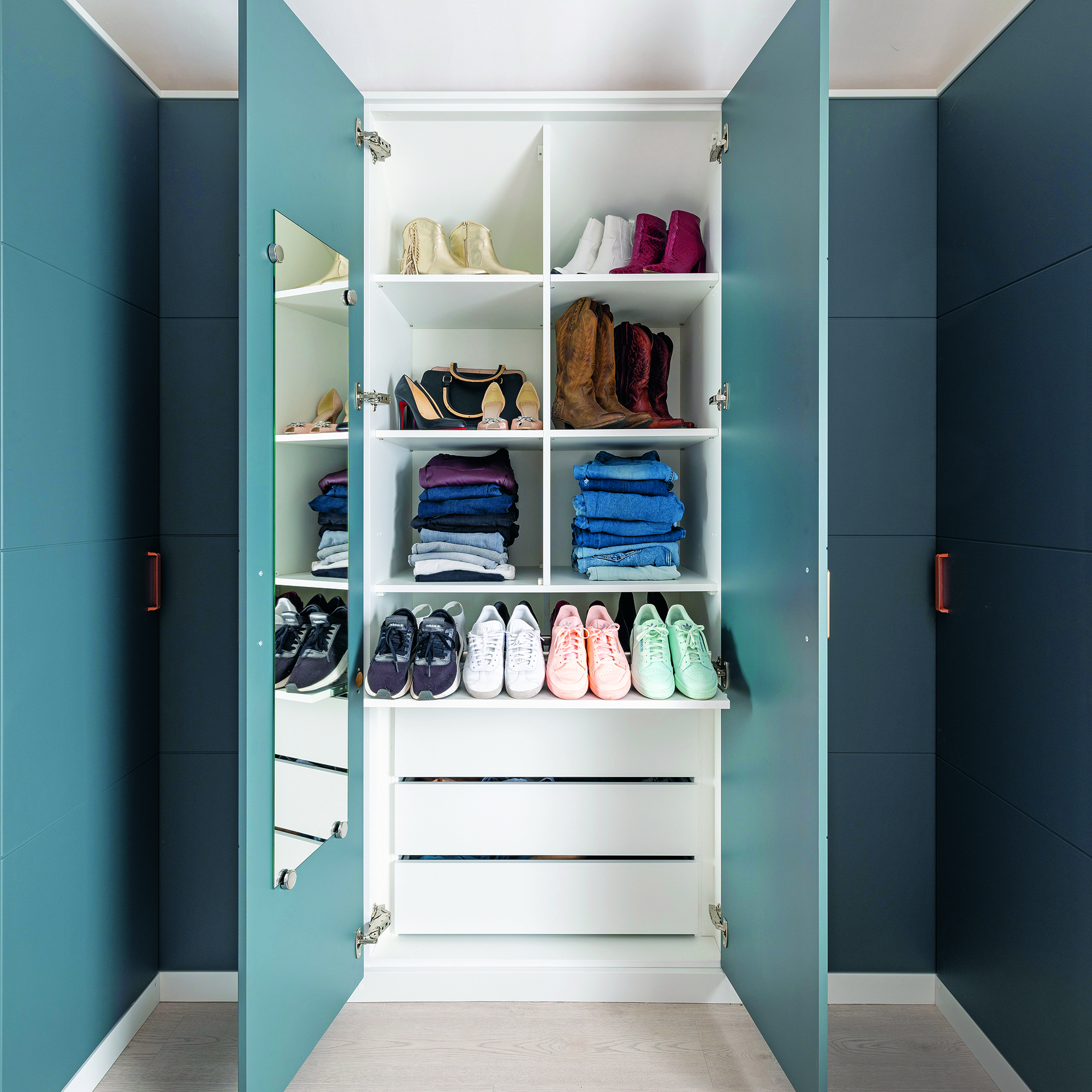
Wardrobes or built-in storage with shelving instead of drawers are generally less expensive but can be a nightmare to keep tidy. You may start with stacks of beautifully folded sweaters, neatly aligned shoes and artfully perched handbags. But as more ‘stuff’ inevitably gets crammed in, the more it starts to look like a bomb has been detonated.
Again, a massive clear-out is key. Weed out anything that still has a tag on or you know doesn’t fit well/feel comfortable and donate, donate, donate. The same goes for handbags, accessories and other random items that get shoved down the back of the wardrobe because you can’t think of a better home. We’re looking at you, Christmas wrapping paper rolls and excess scatter cushions.
Finally, it’s time to address those shelves. ‘I often get asked how to keep bedroom storage shelves neat and it depends hugely on the contents. If it's something like bags, I’ll suggest Perspex dividers (available on Amazon) and bag "fillers" that help keep their shape. Or if it's shoes there are great stackable clear boxes that will show them off beautifully,’ says professional organiser Helen Constantine.
‘However, if your shelving is for clothes, then there are honestly two answers. Either learn to really love folding and get quick at it or use fabric storage boxes so you can keep things categorised, but you can also just throw them in quickly. There are lots of folding gadgets out there, but none really work, I'm sorry to say.’
7. Don’t overlook hard-to-reach areas
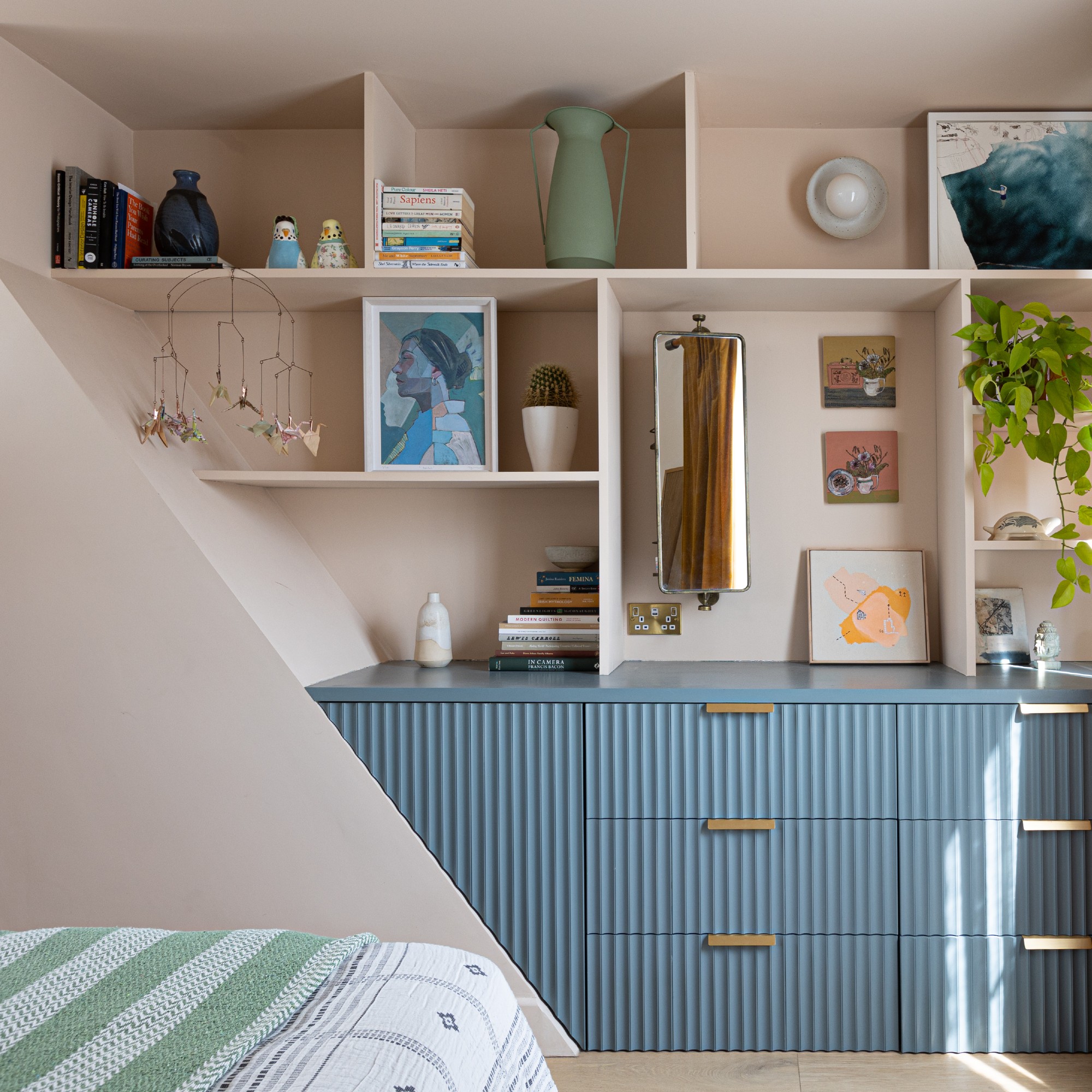
It’s easy to just stick to the most visible and most frequented areas when cleaning and decluttering. But every spot, no matter how hard to reach or see it is, should be addressed.
‘Under the bed, bottom of wardrobes and tops of cupboards are often areas that get overlooked when decluttering a bedroom. It’s usually the most visible areas that are focused on, for obvious reasons as visually they make the biggest impact but remembering those hard to reach areas where items can get trapped or shoved out the way is important to make sure you’re really keeping on top of your space,’ Siân explains.
8. Maximise bedroom storage
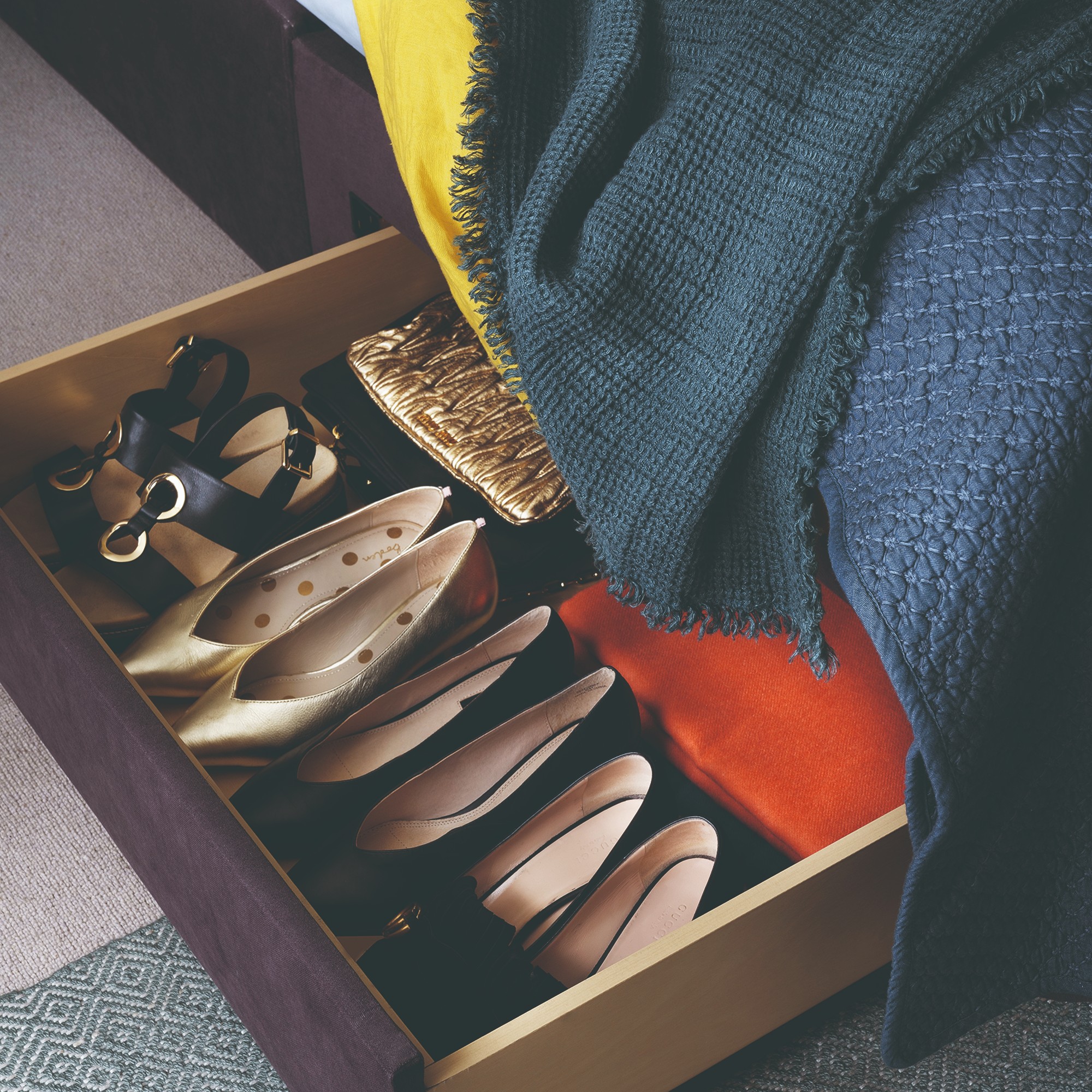
There are always more ways in which you can better a room’s storage solutions. And the bedroom is no exception.
Victoria of Surrey Decluttering has several suggestions, ‘What many people may not realise or bother with is to change the internal configuration of their wardrobes to better fit and suit their needs. Don’t need much hanging space? Take the rail out and replace it with a couple of shelves. The opposite also applies. For hanging clothes, consider upgrading your plastic, bulky hangers to thin velvet ones – not only will they take less room, but also make your clothes hang better (and look tidier).’
‘The bed itself offers a massive storage opportunity. To maximise space, invest in an ottoman or a base with drawers. This space is ideal if you alternate between your summer and winter wardrobes. Consider vacuum bags too. Consider the space above the wardrobe too. Measure the space and buy some boxes and containers to fit. Ideal for out of beach and/or special occasion wear,’ she says.
Jane of Jane Lee Interiors adds one more piece of advice about shopping for storage solutions, ‘Another tip is to delay what most people see as the fun bit - shopping for storage - until near the end. Until then you won’t know how much, or what kind of storage, you’ll need, if any. Think of it as a reward for all your hard work.’
Underbed storage boxes are the perfect way to take advantage of all that extra space underneath the bed. And for £4.40, this one is a bargain.
Velvet hangers are not only more stylish, they also take less space than any other style of hangers. And for a set of 20, £8.99 is very reasonable.
If you do seasonal wardrobe swaps (as you should), then vacuum storage bags are invaluable. And you can even use vacuum storage bags to store some kinds of duvets.
Matching storage boxes make storage look all the better. We love the sleek and minimalist look of these ones from Argos.
Ottomans with hidden storage not only look great positioned at the foot of the bed, they are also practical. And this DUSK design is both classic and chic.
If your bed doesn't already come with built-in drawers or underbed storage, then buying drawers like these ones from The Range is your best bet for maximising storage of that particular space.
9. Improve visibility
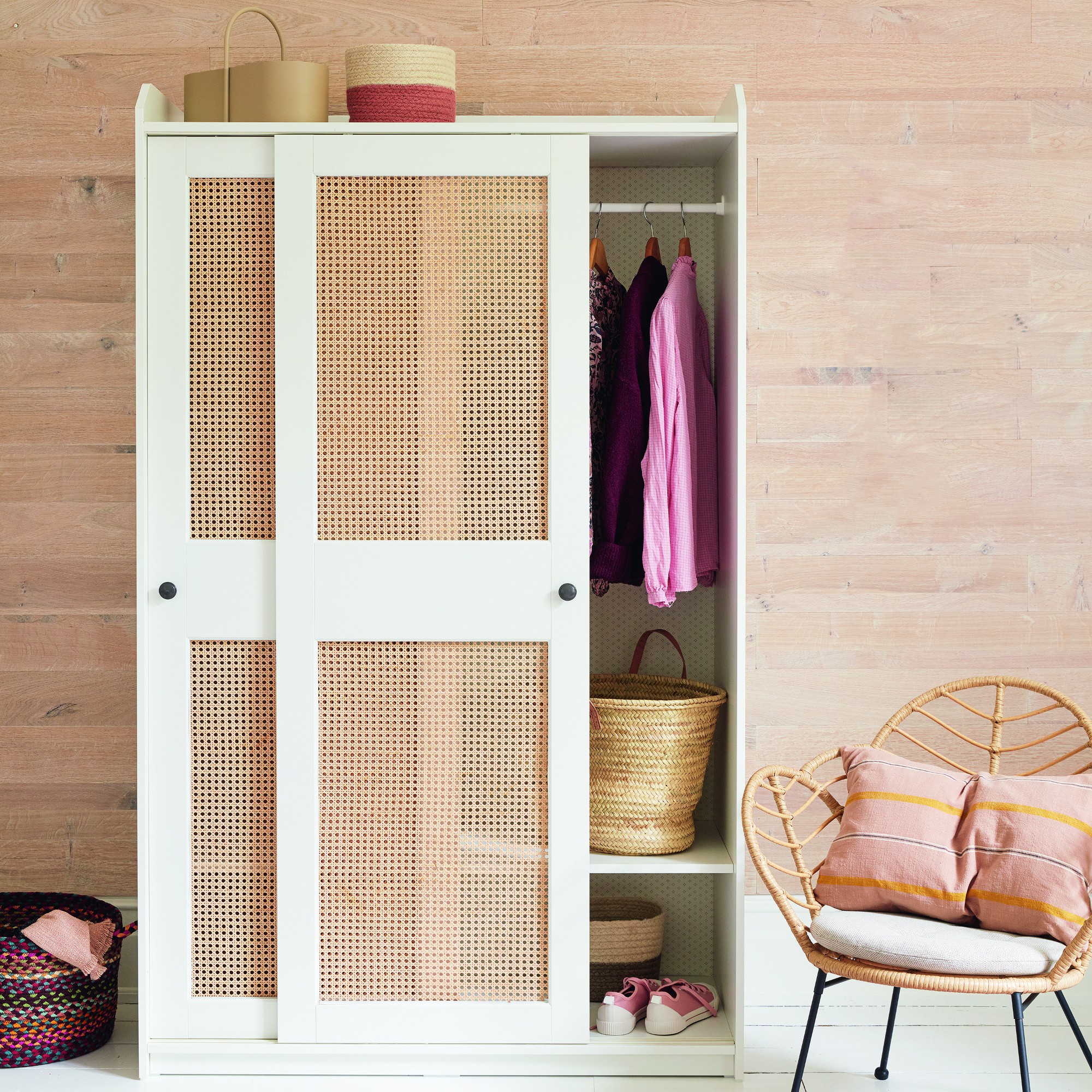
Studies reveal most of us wear just 20% of our clothing 80% of the time, and a big reason for that is we literally can’t see the wood for the trees in our cluttered closets. Obviously the massive clear out mentioned above will help, but there are also some simple hacks to help you see all the outfit options, not just the last three things you shoved in there.
‘To keep items in your wardrobe really visible, map out your wardrobe space by categorising your clothing into departments, i.e. coats, jackets, dresses etc, and then colour block within those departments to help you see what you have got easily. This not only looks more aesthetically pleasing, but it will also save you time when getting ready,’ advises professional organiser, Hayley Harrison, from Organise-d.
Internal lighting, which can be easily retro-fitted using rechargeable stick-on lights from Amazon, will literally make everything more visible and is one of the best wardrobe storage ideas in bedrooms that lack natural light. Go for fittings with motion sensors to maximise battery life.
10. Embrace a capsule wardrobe
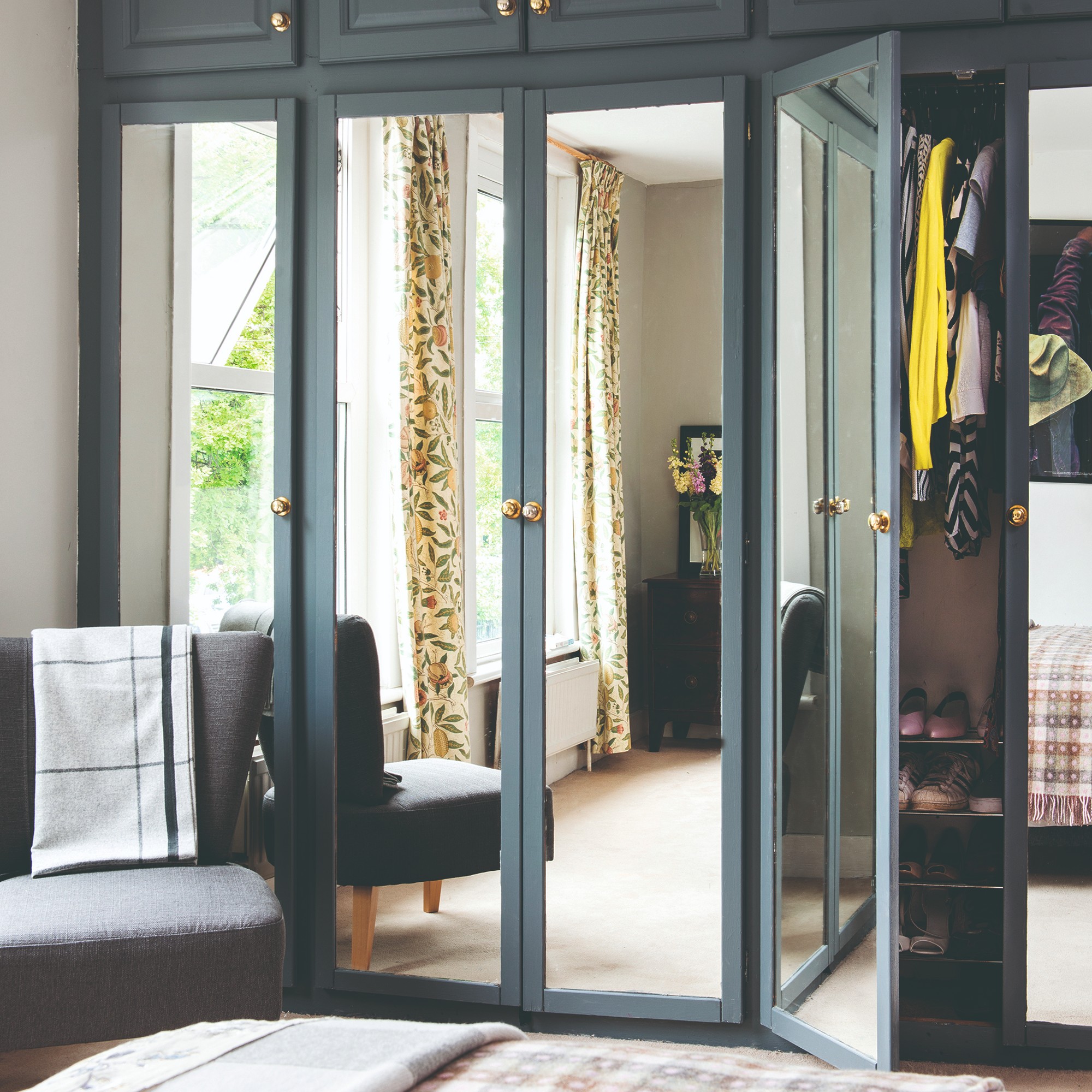
A capsule wardrobe is brilliant for reducing clutter. The idea is you buy clothing that can be put together in a variety of ways, so you have multiple outfits without owning excessive amounts of clothing. Genius. ‘You’ll have less clothes, but clothes that you love/make you feel like your best possible self. This allows you to get dressed quicker and with less stress as your clothes should all work well together,’ explains Helen.
If you struggle to part with your clothes to embrace the capsule wardrobe life, Helen suggests you consider these four things:
1. When did you last wear that item?
2. How does it make you feel?
3. Does it go with more than one item in your wardrobe?
4. Is it in good condition (get rid of anything that is stained or has holes in it, no matter how much you've loved it in the past)?
‘You can take the capsule wardrobe concept as far as you want – just clothing or include accessories, shoes, coats and even jewellery,’ she adds.
11. Schedule seasonal switchovers
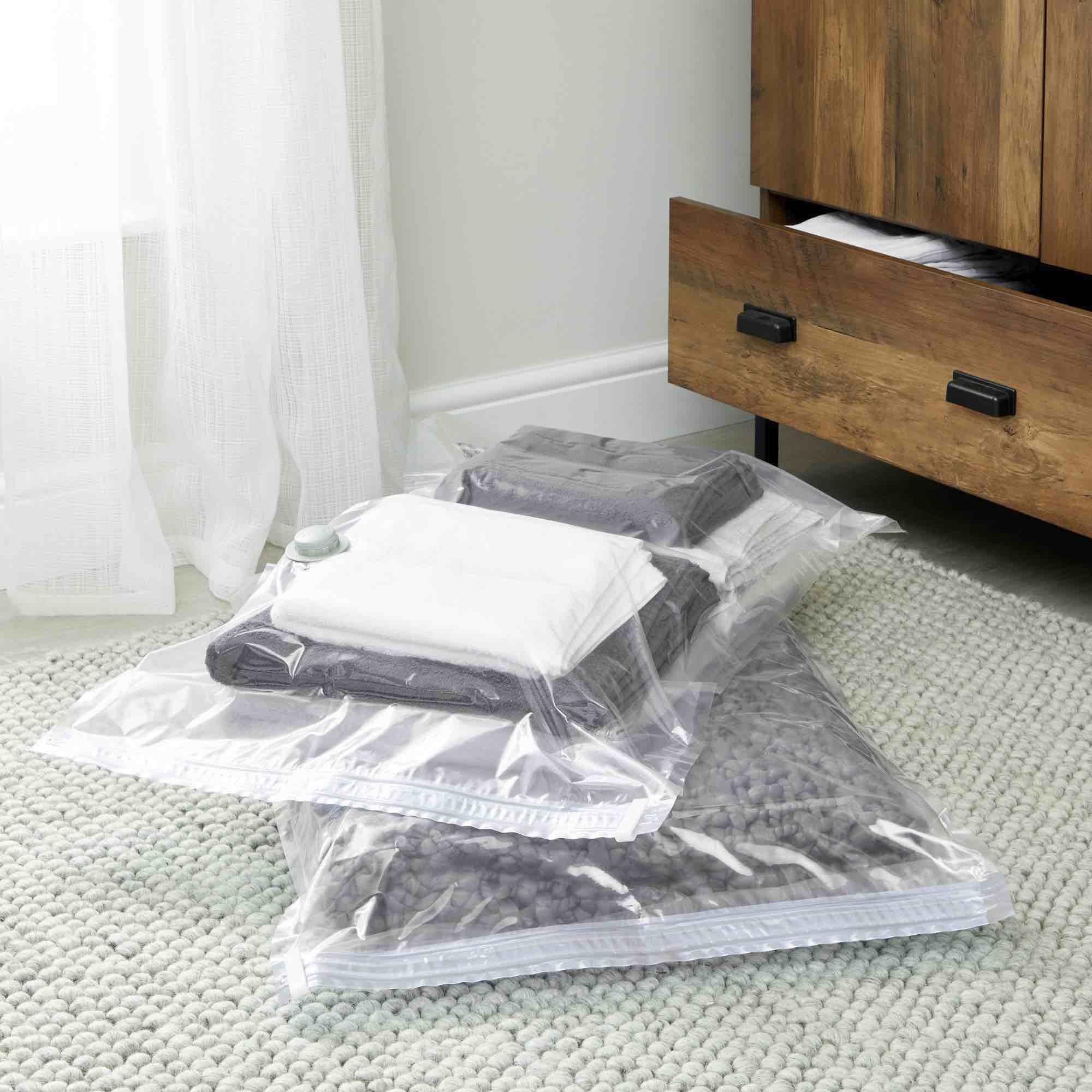
‘Where bedroom drawers and wardrobe space is limited, we highly recommend adopting the practice of seasonal switchovers. You can store the off-season clothes in vacuum storage bags, unused suitcases or under bed storage bags. This will give you more space in your wardrobe and cupboards for items not needed at that moment in time,’ says Charlotte Reddington, co-founder of Style Sisters.
While there will be several transitional items that work through the year, most seasonal switches can be done in late Spring (ready for summer) and late Autumn (ready for winter). Try to store your clothes away clean and in airtight containers so they’ll be ready to go when you need them – but don’t bother with ironing as they’ll only need doing again if creasing bothers you.
12. Sort out tech
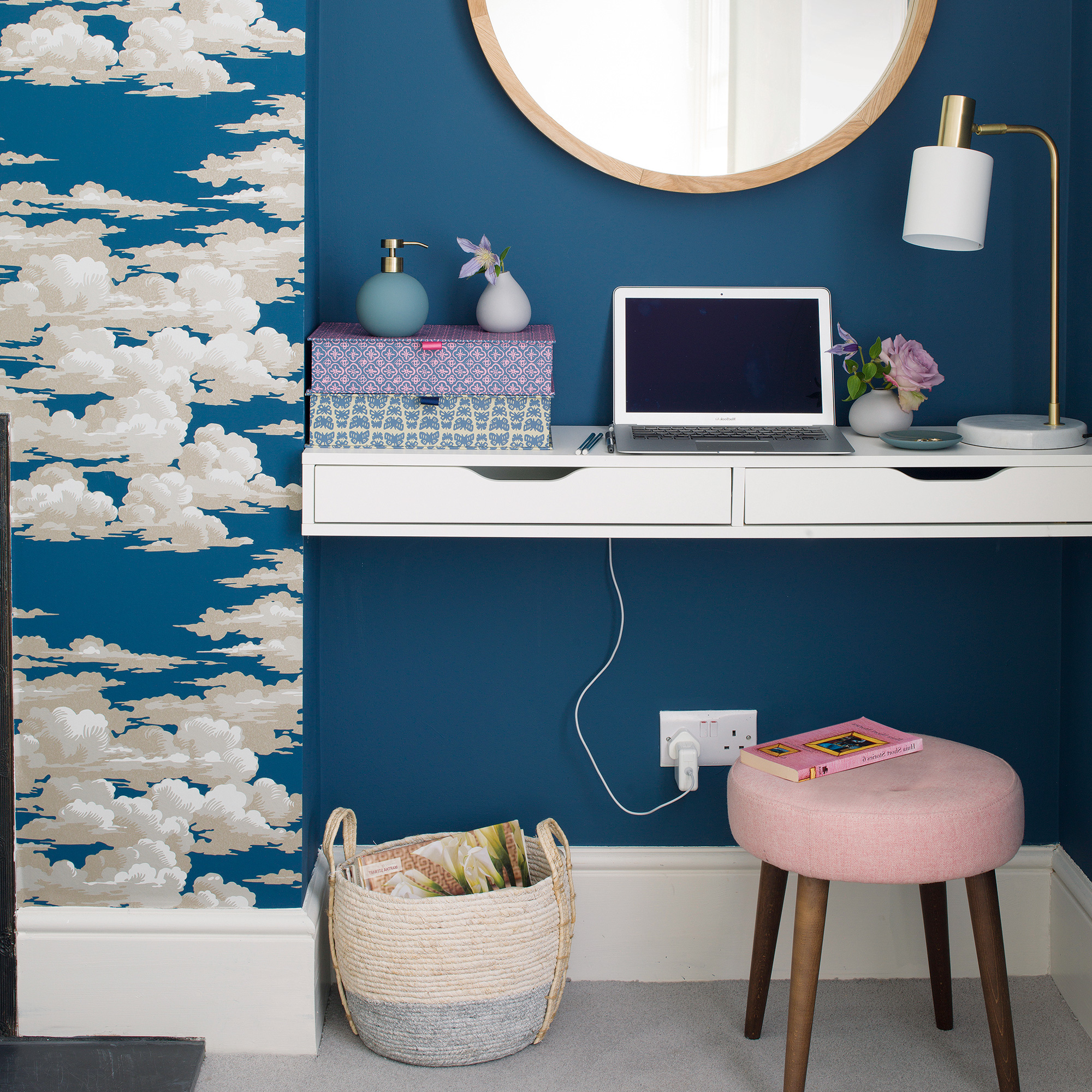
We all know that charging phones and other blue-light emitting tech isn’t ideal in the bedroom but sometimes it’s just more convenient, or even essential if you’re on-call or have teenagers to keep track of! For those who work from home, a small office space in the bedroom may be the only peaceful option. If any of these scenarios sounds familiar, decluttering your bedroom should include sorting out the tech.
‘It’s often surprising how much tech can build up in the bedroom. Begin by removing any unused electronics, cords, or chargers, keeping only essential devices and their corresponding chargers,’ Penny Moyses, Home Expert and founder of the Clean & Tidy Home Show. ‘Next consider using a cable organiser to keep cords untangled and easy to access and shut as much as possible behind closed doors, or inside storage baskets.’
Wireless charging points can also help reduce the visual clutter of trailing cables, and you can buy bedside tables with the tech built in.
13. Take a hard line with linens
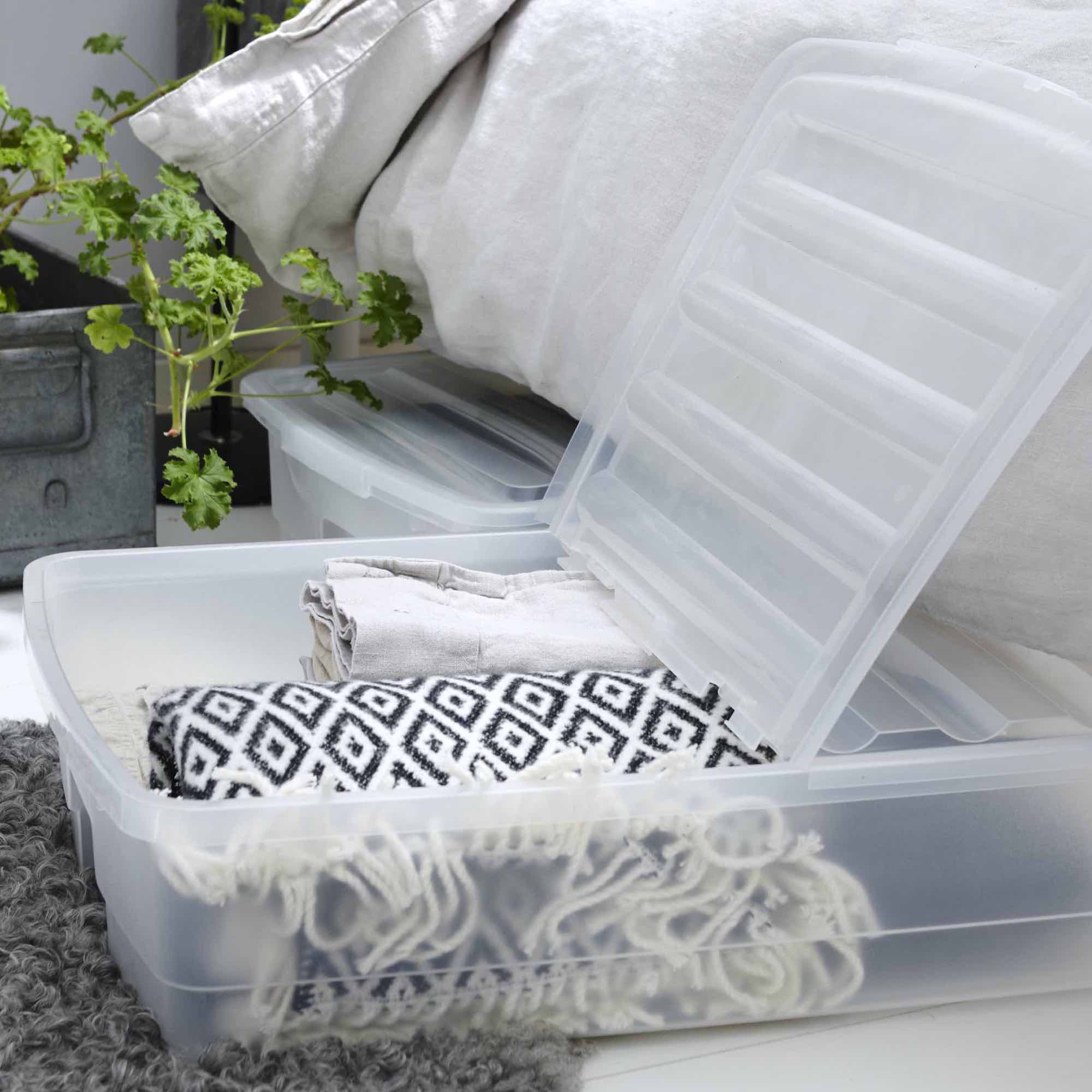
If you’ve been a homeowner for more than a couple of years, it’s likely you’ve built up an impressive collection of bedding and bed linen. There’s also a high chance at least one set will be threadbare, another too scratchy and one that’s just plain ugly! ‘Assess your bed linens, pillows, and duvets, keeping only the sets you use and love. Donate or discard excess items and store your linens in a closet or airtight storage container under the bed,’ says Penny from the Clean & Tidy Home Show.
Experts agree that three sets of bed sheets per bed is ideal – one set on the bed, one in the wash and a spare for accidents (especially for kids’ beds). Off-season duvets can be vacuum-packed to take up less space – just pop them in the tumble-dryer or washing line to air when it’s time to switch.
14. Declutter regularly
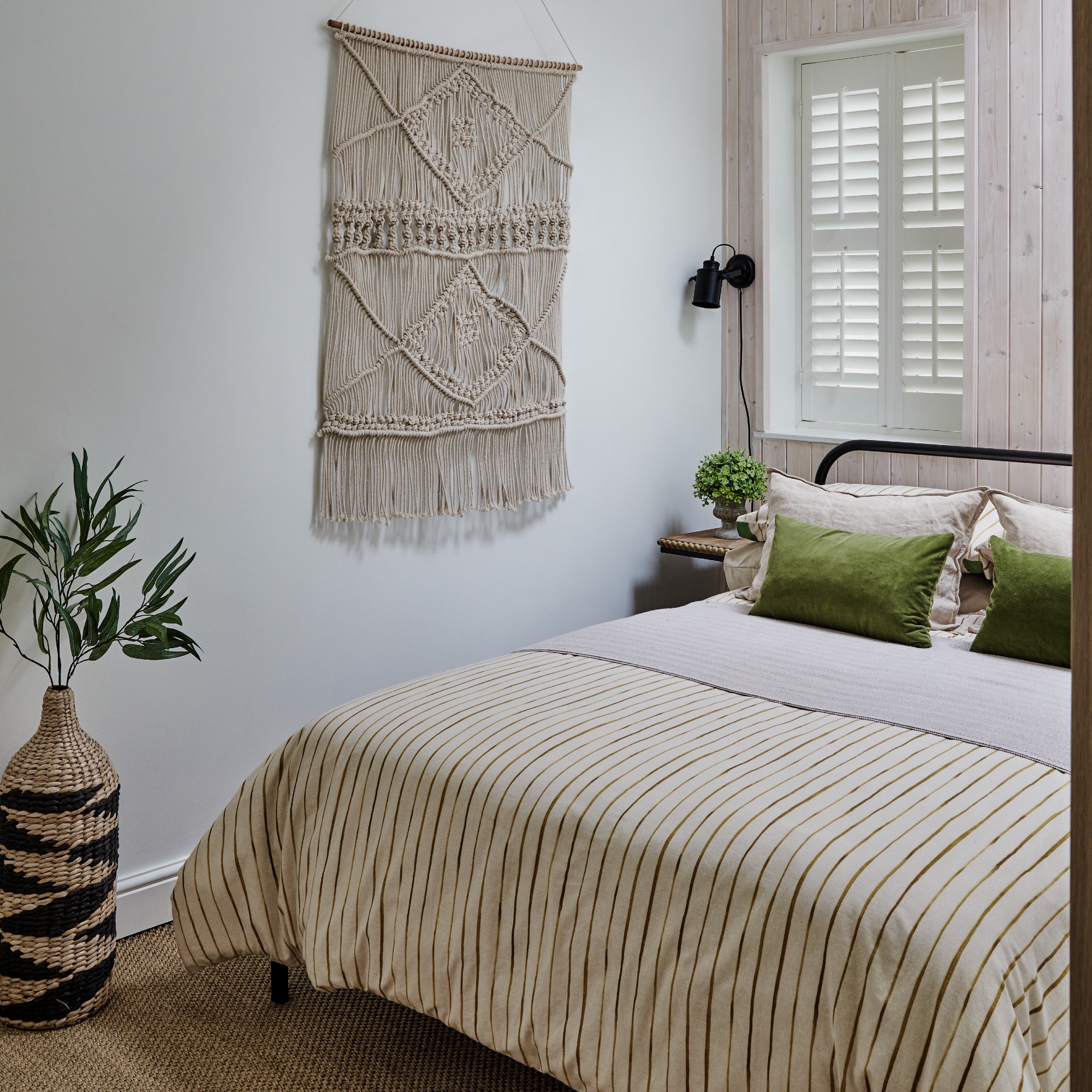
It’s no coincidence that spring cleaning is a thing. As every area should get a spruce up at least once a year, whether you do it in the depth of winter or once spring arrives with its sense of new beginnings. But just like the rest of the house, your bedroom should also be decluttered at least once a year.
‘There may be some areas that are more important than others when you’re doing a bedroom declutter (or any other area) but every area should get a look in once or twice a year to really keep on top of your space,’ Siân says.
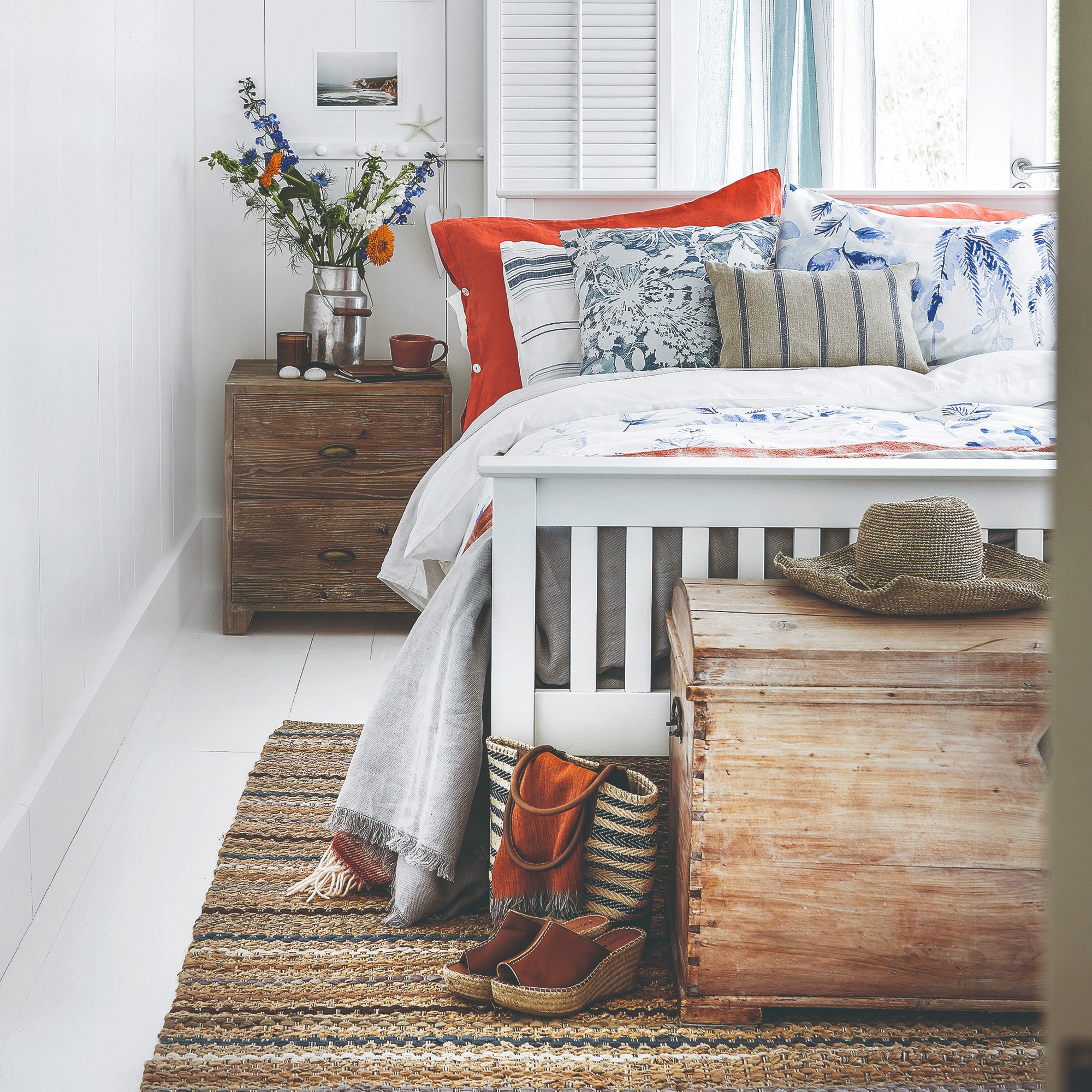
FAQs
Where do I start when decluttering my bedroom?
When decluttering a bedroom, it’s best to start with the basics and start small.
‘Make the bed – this has an immediate visual impact and also provides a surface for sorting,’ says Becky Purchas, founder of White Space and APDO member. ‘And clear the floor. Having a clear floor will make it easier to get to your storage and will instantly make the room feel clearer.’
Siân Pelleschi, founder of Sorted! and APDO president, continues, ‘I always like to start around the bed, particularly the bedside tables. It’s an area that can easily get clogged up but I feel it should be clear when you lay your head down to sleep and wake up in the morning.’
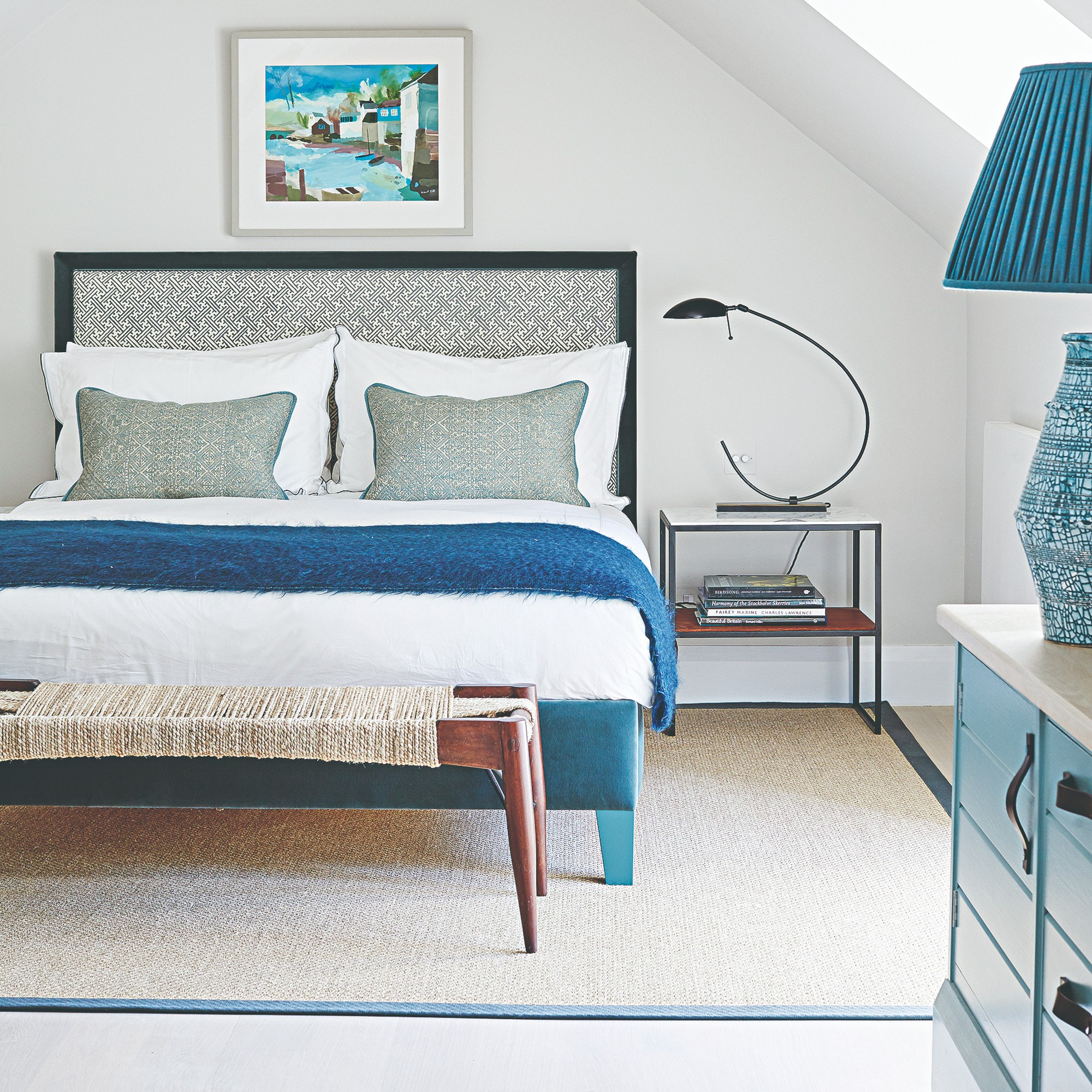
How long should it take to declutter a bedroom?
There is no easy answer to the question of how long you should take to declutter your bedroom as it varies from person to person, bedroom to bedroom.
But Siân Pelleschi, founder of Sorted! and APDO president, gives us an idea, ‘That all depends on the size of the bedroom and how big a declutter and organise you’re doing. If you’re doing a thorough declutter and working through everything, give yourself a day. If you’re just keeping on top or focusing on one particular area then a couple of hours could suffice. However it all depends on how focused you can be – if you’re the kind of person who gets easily distracted, allow for more time.’
Hopefully, this little guide makes the seemingly colossal task of decluttering a bedroom all the less daunting.







